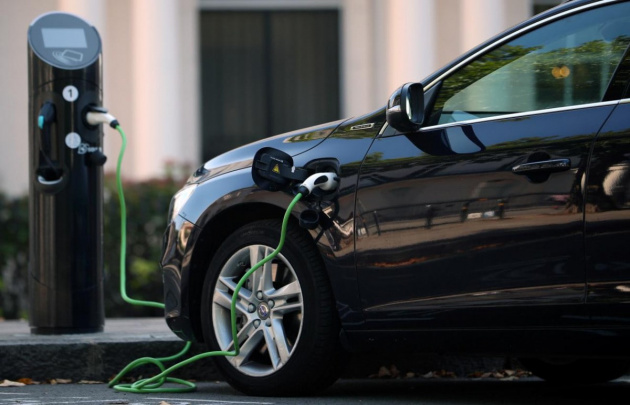Gold supplies provided half of Uzbekistan’s exports in February
Foreign trade volume exceeded $9 billion, and the deficit widened to $2.65 billion.

Фото: AP
Uzbekistan’s foreign trade turnover in January-February amounted to $9.19 billion, increasing year-on-year by 10.5%, the Statistics Committee reports.
The volume of exports increased by 13.6% – to $3.63 billion. At the same time, imports amounted to $6.28 billion, which is only 8.7% more than last year. The foreign trade deficit widened slightly and reached $2.65 billion.
Last month, Uzbekistan exported gold worth $1.31 billion. In January-February 2023, supplies of the precious metal brought in $1.18 billion.
China remains the republic’s largest trading partner, trade turnover with which almost doubled, amounting to $2.13 billion. Of this, $1.78 million was the import of goods and services – the main importer on the Uzbekistan market.
The second position is occupied by Russia with $1.76 billion, of which exports amounted to $493.4 million – the main market for Uzbek products. This is followed by Kazakhstan ($581.5 million), Turkey ($435.5 million) and South Korea ($386.8 million).
Export
Excluding gold, manufactured goods remain the largest commodity export item – $610.7 million. However, their supplies decreased by 0.4%.
Revenue from the export of textiles and fabrics increased by 5.6% and amounted to $360.2 million. Supplies of non-ferrous metals fell by 7.4% to $164.4 million.
The volume of exports of chemical products increased by 54.6%, amounting to $240.9 million. Inorganic substances showed a two-fold increase – to $147.2 million. Supplies of plastics ($37.8 million) and fertilizers ($33.5 million) also increased significantly.
Third place was taken by food exports with $236.9 million (+6.6%). More than half of the supplies came from the fruit and vegetable group ($154 million, +25.9%), and among the remaining export volume, grains brought in $65.1 million (-20%).
Exports of consumer goods amounted to $185.5 million (-5.5%). Shipments of apparel items increased to $152.4 million (-5.4%), and various ready-to-wear products approached $20 million (+61.8%).
In the mechanical engineering category, there was a drop of 9.8% to $128.2 million. If the export of automobiles decreased by 8% ($40.9 million), and the supply of electronics decreased by 10.3% ($29.5 million), then the export of industrial machinery and equipment increased by 13.5% and reached $152.7 million.
At the same time, exports of raw materials increased. Thus, hydrocarbon supplies increased almost threefold – to $109.9 million. Gas saw a fourfold increase to $26.7 million, and petroleum products increased threefold – to $67.1 million
Import
In the structure of imports of goods, engineering products lead the way with $2.44 billion (+2.4%). Deliveries of automobiles tripled ($718.3 million), electrical equipment - by 84.4% ($324.2 million), electrical equipment – by 66.6% ($176.1 million).
Second place is occupied by manufactured goods – $1.13 billion, the supply of which increased by 32.2%. In this category, imports increased significantly for iron and steel (73.4%), metal products (19.9%) and non-ferrous metals (16.1%).
Imports of chemical products decreased by 7.3% – to $739.6 million. Costs on medical goods amounted to $305.3 million (-1.4%), chemical materials – $128.8 million (+41.4%), plastics – $105.4 million (-15%).
Imports of foreign food decreased by 6.9% and amounted to $534.7 million. The supply of grain products amounted to $148.7 million (-33.3%), vegetables and fruits – $99.2 million (+73.6%), sugar and confectionery – $60.7 million (-31%).
In addition, supplies of fuel and fuels and lubricants increased by 62.7% – to $547.9 million. Imports of natural gas from Russia and Turkmenistan soared by 95.6 times, reaching $166.7 million. Coal supplies increased by half ($42 million), oil and petroleum products – by 5.3% ($302.9 million).
Recommended
List of streets and intersections being repaired in Tashkent published
SOCIETY | 19:12 / 16.05.2024
Uzbekistan's flag flies high on Oceania's tallest volcano
SOCIETY | 17:54 / 15.05.2024
New tariffs to be introduced in Tashkent public transport
SOCIETY | 14:55 / 05.05.2023
Onix and Tracker cars withdrawn from sale
BUSINESS | 10:20 / 05.05.2023
Latest news
-
Uzbekistan’s population reaches 37.7 million: Men slightly outnumber women
POLITICS | 14:06
-
EU commits to long-term cooperation with Central Asia on transport, energy, and innovation
POLITICS | 14:03
-
Investigation closed: Authorities deny torture after man taken for interrogation dies in custody
SOCIETY | 13:10
-
Greenery disappears as road expands: Tree uprooting in Boysun sparks public outcry
SOCIETY | 13:08
Related News

12:14 / 04.04.2025
Business Ombudsman challenges EV import restrictions in Uzbekistan

19:37 / 03.04.2025
Uzbekistan imports over half a million mobile phones in just two months

15:37 / 03.04.2025
Market manipulation? Leapmotor’s import ban sparks controversy

15:44 / 02.04.2025



